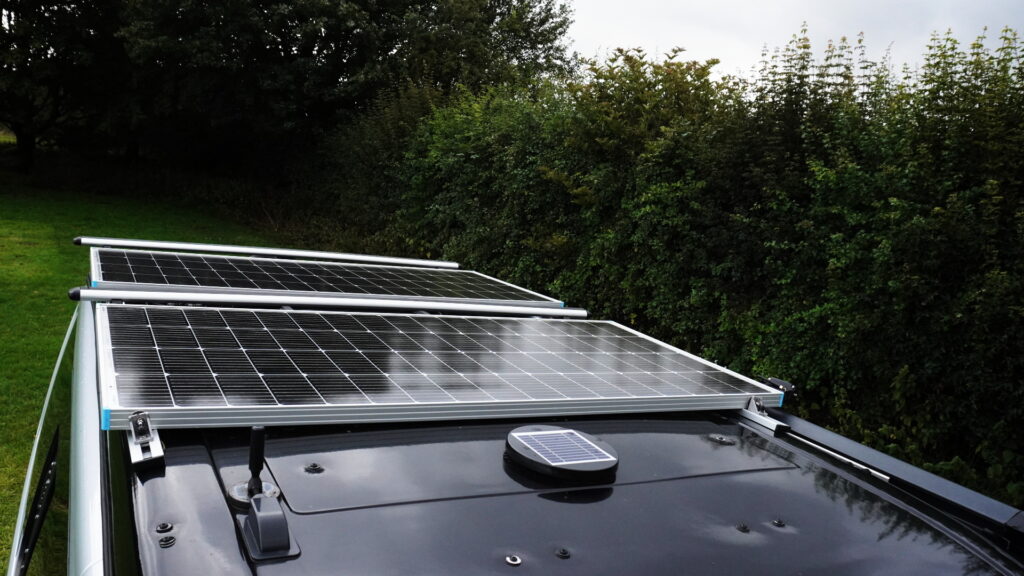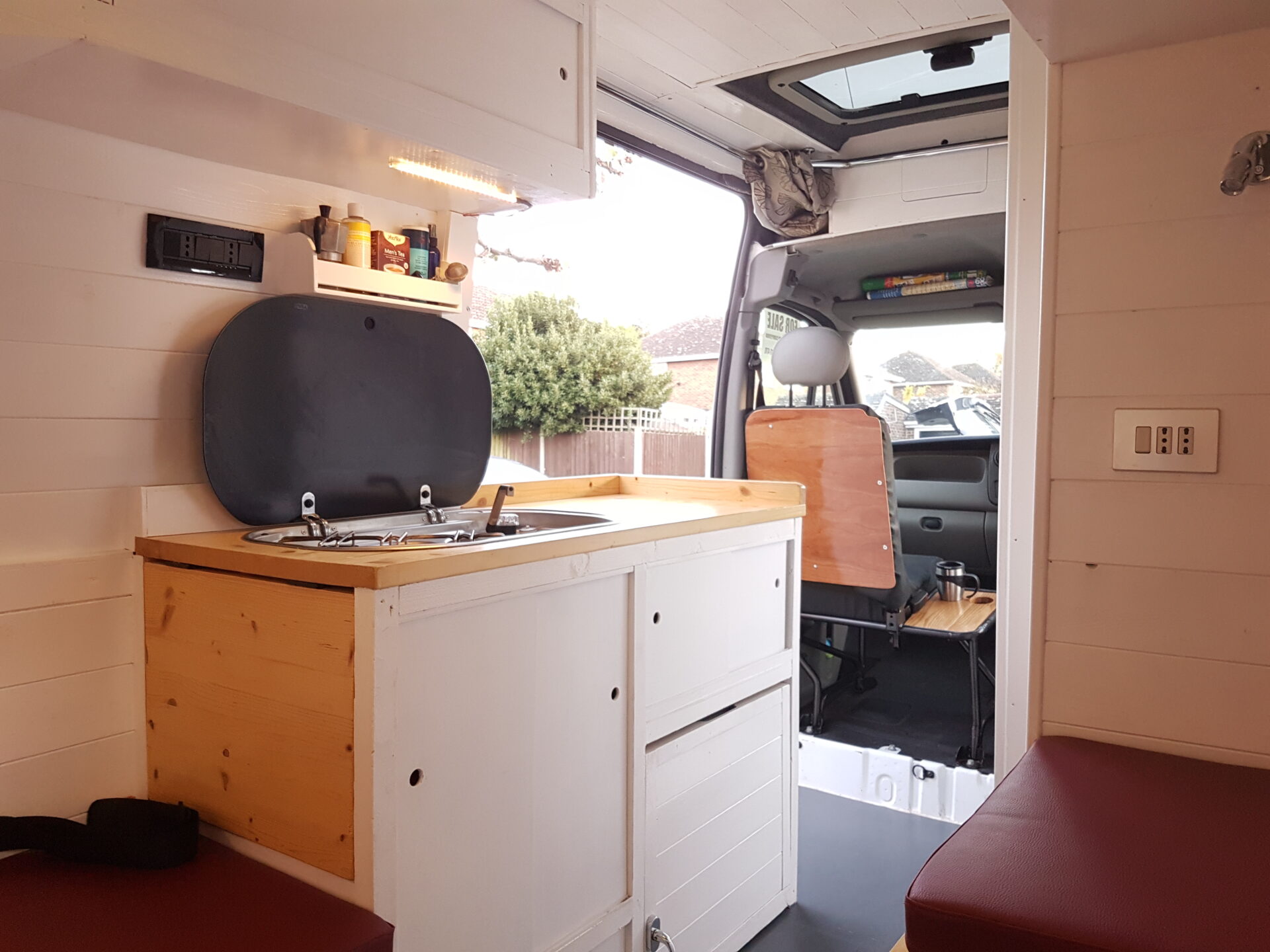Jess is equipped with 400W of solar power capable of producing about 30 Amps of power in optimal conditions. Coupled with two 100 Ah lithium batteries and 1000W pure sine wave inverter then you have a very capable off-grid power system. If this all sounds a bit confusing don’t worry. Putting it simply Jess is able to provide power for low consumption things like laptops, phones and even the portable induction hob we provide so you can cook off-grid with electricity.

USB Charge points
Jess has a total of 10 USB charge points:
- USB cigarette lighter socket adapter in front cab (2 sockets) – only use this one while the engine is running otherwise you may drain the engine start battery.
- Dashboard: 1 USB socket – this integrates with the radio and provides charge too. Again only use when the engine is running. Ideal for charging your phone/satnav
- Behind driver’s seat – a power charge station which has 3 cigarette lighter 12 v sockets and 4 USB sockets including a high powered socket for fast charge.
- Rear console: 2 USB sockets
- Underside of reading light: 1 USB socket.
Electric Hookup on Campsites
If you want to power heavier duty appliances like microwaves, air fryers, hairdryers, eBike chargers etc. then you can always plug in at a campsite or even to a household electric socket (adapter provided). Hookup cable and domestic socket adapter are provided under the passenger bench seat.
How to get the most out of the off-grid power system
Here are some handy hints from years of experience to get the most out of the off-grid power system in Jess the VW campervan.
- Turn off the 240v inverter when not in use, there’s a button on the back side wall above the 240 v sockets. Inverters consume energy even when they are doing nothing.
- When camping, park the campervan with the rear door facing south. That way when you pop the top the solar panels are angled towards the sun!
- Only use the induction hob on settings 1 to 3. If you turn it up too high you’ll strain the battery bank. Setting 3 is ideal for frying, boiling water etc.
- When you run the engine it will recharge the batteries at approximately 20Amps/hour. Knowing this you can plan your day better. If you know you need to drive somewhere then do it after you’ve cooked your lunch. That way you can cook on the induction hob knowing that you’ll be recharging the battery when you drive.
- The battery monitor is really helpful. It will show you how much charge you have (SOC = State of Charge). It will also show you the real-time amps being drawn from the battery: a positive number means the battery is charging, a minus number means it is draining. When it’s draining it actually gives you an estimate of how much time the battery can support the current power draw before it is flat.
- When the battery is at about 95% or more charged then even if it is really sunny you will only see about 1 amp going into the batteries from the solar panels. This is normal because the system is just keeping the battery bank topped up.
- You do not need the fridge on full. Typically the fridge freezer will keep things chilled even on setting 1 or 2. Furthermore, the fuller the fridge, the more economical it is. The reason is that things in the fridge like a bottle of water or food store the cold so when you open the door, even though the cold air escapes, the cold in the items remain. If the fridge is empty then each time it opens the cold air escapes and there’s nothing left in the fridge that is cold. Whereas when it is full, then although the cold air escapes, all the cold things remain, helping retain the cold.
How long will the leisure batteries Last?
The battery bank is 200Ah and if we keep things really simple then this means that it can deliver about 170 Amps before it is too low and switches off to protect itself. Here are some approximate examples of how much different things consume:
- Inversion Hob on power 3 for 30 mins = 20 Amps
- All lights on for 1 hour = 1.5 Amps
- Diesel heater for 1 hour = 4 Amps
- Fridge/freezer overnight = 10 – 15 Amps
- Charging your phone for 1 hour = 2 Amps
- Rear and side view cameras for 1 hour = 0.5 Amps
- Heater on cold blow in summer for 1 hour = 3 – 4 Amps
And here’s some examples of the capacity to recharge the battery:
- Driving the campervan for 1 hour = approx 15-20 Amps
- On electric hookup for 1 hour = approx 20 Amps
- Very sunny day: Solar for 1 hour = approx 30 Amps
- Typical english daytime for 1 hour = approx 10 Amps


